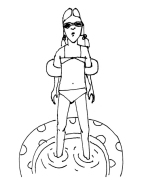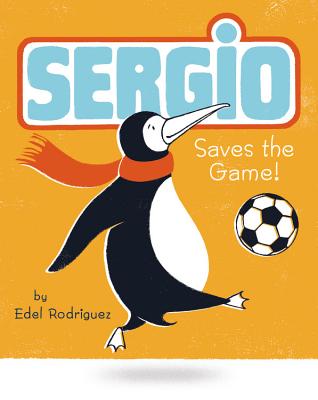Viewing: Blog Posts Tagged with: hot tip, Most Recent at Top [Help]
Results 1 - 13 of 13
How to use this Page
You are viewing the most recent posts tagged with the words: hot tip in the JacketFlap blog reader. What is a tag? Think of a tag as a keyword or category label. Tags can both help you find posts on JacketFlap.com as well as provide an easy way for you to "remember" and classify posts for later recall. Try adding a tag yourself by clicking "Add a tag" below a post's header. Scroll down through the list of Recent Posts in the left column and click on a post title that sounds interesting. You can view all posts from a specific blog by clicking the Blog name in the right column, or you can click a 'More Posts from this Blog' link in any individual post.
 A working knowledge of anatomy will give any illustrator a solid foundation upon which to hone one’s drawing skills. The possibilities are infinite, as along as you begin with the basic skills first.
A working knowledge of anatomy will give any illustrator a solid foundation upon which to hone one’s drawing skills. The possibilities are infinite, as along as you begin with the basic skills first.
Case-in-point: Check out this interview with multi-talented artist Edel Rodriguez here. Then check out his portfolios and blog here.
Note the variety of moves he applies to his character, Sergio, a penguin who loves soccer!



I am often emailed by new illustrators, asking for advice on contacting publishers. The key thing of course is getting the best possible folio together. Before you consider your work ready to show, there are some fundamental things you should check:
 Characterisation is paramount.
Characterisation is paramount.
Picture books are always totally character-lead and those characters have to be ones that children can believe in and take to their hearts. Ideally, you should show both young children and various animals characters. Also, the story must revolve around characters that are truly alive, with distinct personalities: though cute and adorable is important, try all sorts, including 'baddies'.
 You must also show a wide range of emotions, not just 'happy'. Picture book characters will go through adventures where they might need to be angry, lonely, jealous, miserable, cunning...
You must also show a wide range of emotions, not just 'happy'. Picture book characters will go through adventures where they might need to be angry, lonely, jealous, miserable, cunning...
Draw them doing real things too, not just standing around. Try giving them everyday tasks that get them interacting with their environment and other characters.
Creating individual 'worlds' for them to inhabit is also very important. Look at the range of picture books that are being published at the moment for inspiration.

It helps to illustrate a specific story. This not only gives you ideas, but will demonstrate how you interpret text, as well as your drawing ability. Traditional tales or nursery rhymes can be an easy starting point for experimentation; they will give you a subject matter to interpret, and will not be too hampered by existing illustrations.

A few other tips:
1 - Only put in work you are really proud of - quality is more important than quantity. You need between 10 and 20 pieces, but there should be no padding.
2 - Don't try to be all things to all people - decide what style of work you are best at and then perfect it.
3 - Put your best illustration at the very beginning of the portfolio, and
Use the same profile photo of yourself across platforms - twitter, your blog, facebook... It makes you more recognizable.
Even at this conference, people have been coming up to Greg and to Alice because they recognized them from their social media profile photos!
What an easy, quick thing we can all do.
Thanks, Greg and Alice!
Writing a book based in San Francisco (which he wasn't in), Paul used Google maps street view to see the street he had his character walk down. Was it hilly? Oh, there's a green awning. A tree...
How cool!
"Funny, like the devil, is in the details."
awesome advice.
 I quite often get emails from unpublished authors who have seen my books, my website or my blog, and ask if I'd be interested in illustrating their book, and what I charge.
I quite often get emails from unpublished authors who have seen my books, my website or my blog, and ask if I'd be interested in illustrating their book, and what I charge.
I have to tell them that it simply doesn't work like that. So, for anyone out there who has written a book they'd like illustrated, this is how it does work...The first thing is that you don't employ the illustrator: the publisher does. It takes me around 3 months to illustrate a picture book so, if you think about a quarter of a year's salary, you'll see that an author really doesn't want to go there.But there's no need. The illustrator you pick is very unlikely to be the one the publisher would choose anyway, and they are the boss, since they stump up all the money to get the thing on the road.
It would in any case be madness to do the illustrations before securing a publisher: firstly because, to be brutally honest (and you do need to know the truth, though it's upsetting) the success rate in getting your story accepted is pretty low. Which means no professional illustrator would be interested on spec and you wouldn't want to incur any costs before getting your contract.
In any case, your story idea is almost always going to be altered by your editor, sometimes just tweaked, but often changed quite fundamentally, so any premature illustrations would need doing again anyway.
 So: make sure your story fits the format of a 32 page picture book (look at published books), make sure it is presented properly, then send it out to relevant publishers, to specifically named editors. If you're not sure about any of this, buy (or go to your library and look at) the Children's Writers & Artist's Yearbook.
So: make sure your story fits the format of a 32 page picture book (look at published books), make sure it is presented properly, then send it out to relevant publishers, to specifically named editors. If you're not sure about any of this, buy (or go to your library and look at) the Children's Writers & Artist's Yearbook.
And don't worry about the illustrator - we will appear by publisher's sorcery, just when you need us!

"Among the opportunities the future offers writers is the marketing opportunities of the internet."
That's things like understanding and harnessing the power of blogging and facebook and twitter - social media.
And you already something about the world of social media because you're reading this on the SCBWI Conference blog!
Great job!
Okay, this session had so much good stuff I have to share one more great tip:
"I always read the book out loud before I turn it in to make sure it sounds right."
Really great advice.
Thanks, M.T.!
Find out what's cool about you want to write.
When Gordon was assigned the story of Mozart for his first book in the 39 Clues series, his challenge was to figure out what was cool about Mozart...
And he did, and that was "One False Note."

How cool is that?
Great Advice!
"The Assistant Editor of today is the Publisher of tomorrow."
-Jane Yolen
Tina says: There's always going to room for a great story, but it's going to be hard for me to call an editor and say, "I know you have 10 vampire stories, but you really should take a look at this one." As a writer you need to be aware of what's out there, aware of the competition. Otherwise you're giving an editor a reason to reject you.
The novels she's sold in this market have come about because the writer had interests beyond their story. She suggest cultivating not only writing, but other hobbies or interests that can somehow inform your writing and making it richer.
About 75% of her authors are first-timers. She loves working new authors and she accepts e-queries.
Hot Tip: Tina Wexler is really into bee keeping. (If you have a manuscript involving bee keeping, work up that query.)
 A working knowledge of anatomy will give any illustrator a solid foundation upon which to hone one’s drawing skills. The possibilities are infinite, as along as you begin with the basic skills first.
A working knowledge of anatomy will give any illustrator a solid foundation upon which to hone one’s drawing skills. The possibilities are infinite, as along as you begin with the basic skills first.












 So: make sure your story fits the format of a 32 page picture book (look at published books), make sure it is presented properly, then send it out to relevant publishers, to specifically named editors. If you're not sure about any of this, buy (or go to your library and look at) the
So: make sure your story fits the format of a 32 page picture book (look at published books), make sure it is presented properly, then send it out to relevant publishers, to specifically named editors. If you're not sure about any of this, buy (or go to your library and look at) the 

Brilliant, Lynne. Really interesting and educational. Also, lovely to see you in action!
BTW, the 'becoming an illustrator' link under the vid works, but clicking on the vid doesn't. Just so you know.
Thanks Cass - set this up while I was away and so on'y just found out it's not working. Will try and sort!